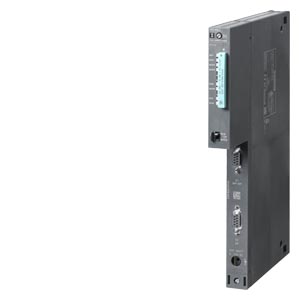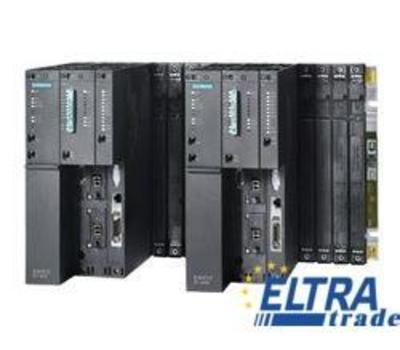Siemens SIMATIC S7-400H
Siemens 6ES74162XP070AB0
Siemens 6ES74175HT060AB0
- CPU 417-5H
- central processing unit for S7-400H and S7-400F/FH
- 32 MB memory (16 MB data/16 MB program)
Siemens 6ES74000HR014AB0
6ES7400 SERIES SIMATIC S7-400H, ST74, 11 Kg, Pkg. 99999x99999x99999 (cm)
Siemens 6ES74000HR024AB0
6ES7400 SERIES SIMATIC S7-400H, ST74, 11 Kg, Pkg. 99999x99999x99999 (cm)
Siemens 6ES74000HR034AB0
6ES7400 SERIES SIMATIC S7-400H, ST74, 11 Kg, Pkg. 99999x99999x99999 (cm)
Siemens 6ES74000HR044AB0
6ES7400 SERIES SIMATIC S7-400H, ST74, 11 Kg, Pkg. 99999x99999x99999 (cm)
Siemens 6ES74000HR514AB0
6ES7400 SERIES SIMATIC S7-400H, ST74, 11 Kg, Pkg. 99999x99999x99999 (cm)
Siemens 6ES74000HR524AB0
6ES7400 SERIES SIMATIC S7-400H, ST74, 11 Kg, Pkg. 99999x99999x99999 (cm)
Siemens 6ES74000HR534AB0
6ES7400 SERIES SIMATIC S7-400H, ST74, 11 Kg, Pkg. 99999x99999x99999 (cm)
Siemens 6ES74000HR544AB0
6ES7400 SERIES SIMATIC S7-400H, ST74, 11 Kg, Pkg. 99999x99999x99999 (cm)
Siemens 6ES74011DA010AA0
Siemens 6ES74050DA020AA0
Siemens 6ES74125HK060AB0
6ES7412 SERIES SIMATIC S7-400H, ST74, 1.332 Kg, Pkg. 23,30x30x6,30 (cm)
Siemens 6ES74142XL070AB0
SIMATIC S7-400, CPU 414-2 Central processing unit
Siemens 6ES74143EM070AB0
SIMATIC S7-400, CPU 414-3 PN/DP Central processing unit with: Work memory 4 MB, (2 MB code, 2 MB data), interfaces 1st interface MPI/DP 12 Mbit/s, (X1), 2nd interface Ethernet/PROFINET (X5) 3rd interface IF 964-DP plug-in (IF1)
Siemens 6ES74143XM070AB0
SIMATIC S7-400, CPU 414-3 Central processing unit with: Work memory 4 MB, (2 MB code, 2 MB data), 1st interface MPI/DP 12 Mbit/s, 2nd interface PROFIBUS DP, 3rd interface plug-in IFM module
Siemens 6ES74145HM060AB0
6ES7414 SERIES SIMATIC S7-400H, ST74, 1.32 Kg, Pkg. 23,30x30,10x6,30 (cm)
Siemens 6ES74163FS070AB0
SIMATIC S7-400, CPU416F-3 PN/DP Central processing unit
Siemens 6ES74165HS060AB0
6ES7416 SERIES SIMATIC S7-400H, ST74, 1.314 Kg, Pkg. 23,30x29,50x6,30 (cm)
Siemens 6ES74317KF000AB0
6ES7431 SERIES SIMATIC S7-400, ST74, 1.006 Kg, Pkg. 23,30x30,10x5 (cm)
Siemens 6ES74317QH000AB0
6ES7431 SERIES SIMATIC S7-400, ST74, 0.851 Kg, Pkg. 23,30x30,40x4,10 (cm)
Siemens 6ES74412AA050AE0
6ES7441 SERIES SIMATIC S7-400, ST74, 0.802 Kg, Pkg. 23,30x30x3,80 (cm)
Siemens 6ES74533AH000AE0
6ES7453 SERIES SIMATIC S7-400, ST74, 1.81 Kg, Pkg. 23,30x29,60x6,60 (cm)
Siemens 6ES74550VS000AE0
6ES7455 SERIES SIMATIC S7-400, ST74, 1.578 Kg, Pkg. 23,30x30,30x6,20 (cm)
Siemens 6ES74551VS000AE0
6ES7455 SERIES SIMATIC S7-400, ST74, 1.561 Kg, Pkg. 23,30x30,30x6,50 (cm)
Siemens 6ES74081TA007AA0
Siemens 6ES74163ES070AB0
Siemens 6ES74221BL000AA0
Siemens 6ES74311KF000AB0
Siemens 6ES74311KF100AB0
SIMATIC S7-400H are programmable controllers with a redundant structure, providing high reliability of the control system.
Redundancy of all main functions at the degree of the working schemes of the central processors. High availability provided by the use of switchable I/O system configurations, the ability to use standard I/O system configurations.
Hot redundancy: automatic bumpless transfer to the standby unit in case of failure of the leading side.
Siemens S7-400 is a mighty programmable controller for structure control frames of middle and big intricacy. Modular styling, natural cooling control, versatile widenings options, heavy relations facilities, simplicity of deployment of distributed control systems, and simpleness of service make the SIMATIC S7-400 ideal for almost any automation task.
The SIMATIC S7 400H controller is allotted to construct automatic control systems that are characterized by increased reliability of operation. The presence of a redundant structure allows you to continue working in the event of one or more failures in its components. As a rule, such systems manage production facilities, the downtime of which causes large economic losses.
Extremely secure automation scheme with extra styling.
For statements with big reliability demands:
- operations with big relaunching expenses, expensive downtime, and a bit control and maintenance.
- Reserve central functions.
- Expansion of available peripherals: switchable structure.
- In addition, commonly available peripherals can be used: one-sided structure.
- Hot Standby: Automatic, non-reactive failover to a standby device in the event of an error.
- Structure with 2 separate or one common central unit.
Application area
In many fields of automation technology, ever-rising demands are placed on the availability and therefore guilt forbearance of automation schemes. These are areas where a simple installation can lead to very high costs. Here, only extra methods can meet existence demands.
The fault-tolerant SIMATIC S7-400H meets these requests. It goes on to work even if details of the regulator fail owing to one or more errors.
Thanks to the achieved high availability, the S7-400H is particularly suitable for the following applications:
- Acts with a tall relaunching cost after a regulator insufficiency.
- Processes with costly downtime.
- Processes for processing useful accessories.
- Operations in which info cannot be lost in the event of an error.
- Unattended enclosures.
- Statements with diminished service staff.
Reservation principle
The S7-400H operates on the rule of dynamic excess in warm prop mode (reactive automatic failover in case of error). In accordance with this principle, both auxiliary devices are active in uninterrupted operation. In the event of an error, the undamaged device independently takes control of the process.
To guarantee seamless info shifting, quicker and more secure records swap across a connection to the central unit is required.
Result for redundant operation of I/O peripherals:
In normal mode, both modules are active, i.e. with redundant inputs, for example, a common actuator (two detectors are also probable) is declaim over the two mods, the results are compared and the user is provided with a standardized value for further work. With extra outlets, the importance rated by the client program is output by both mods.
The main areas of application for SIMATIC S7-400 are:
- mechanical engineering;
- automotive industry;
- storage facilities;
- technological installations;
- measurement and data collection systems;
- textile industry;
- packaging machines and lines;
- production of controllers;
- automation of extra goal enginery;
- automation of continuous production.








